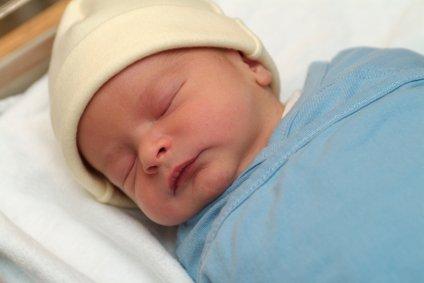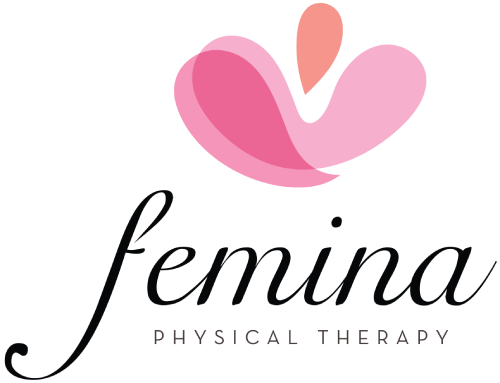
This article covers post-partum pelvic pain and the various reasons women experience it
International Journal of Childbirth Education. December 2008.
Heather Jeffcoat, DPT
You had the perfect pregnancy. Your delivery could not have been any better. At your six-week checkup, everything looks great. So, what’s with all the pain? Pelvic pain is an often neglected problem that many women experience after childbirth. However, when pain persists beyond the first few weeks, patients are often hesitant to mention it to their healthcare providers.
Oftentimes when they do, they are told “it will get better with time” and no further support is provided. But how much time? I have had patients that are still experiencing some degree of pain greater than 1 year after childbirth, and some for much longer than that. That is a long time to wait, especially if the pain is preventing you from returning to exercise, playing with your little one, or even enjoying intimacy with your spouse.
Postpartum pelvic pain can occur due to several factors. After delivery, estrogen levels drop and progesterone levels stay high. This is especially the case if your client is breastfeeding. This hormonal influence causes dryness of the vaginal tissues. In this case, the solution might be as simple as recommending a water-based lubricant for your client and providing general advice to increase their water intake.
Immediate muscle and skin pain or discomfort is also expected, especially if tearing occurs during the delivery. This can be managed, in part, with frequent ice packs to the perineum. Performing Kegel exercises will also promote healing by increasing local circulation. Keeping the area clean with the use of a perineal irrigation bottle and sitz baths will reduce infection and further assist in the healing process. Use of a doughnut cushion provides relief for perineal wound pain in some patients. Finally, keeping bowel movements soft will minimize stress on any sutured and healing sites, thereby minimizing pain.
In another scenario, women may experience immediate, central pubic pain during their vaginal delivery. This could be due to a sprain or separation of the pubic symphysis joint. This will lead to pain over this area, sacroiliac joints, buttocks or thighs. The client will report extreme difficulty and pain with turning in bed, transitioning from a seated to standing position, getting in and out of a car, or with weight-bearing activities.
Later sequelae may include bladder dysfunction (Snow and Neubert, 2001). Early intervention includes providing the client with a pelvic brace for external support. Oftentimes, these patients require advanced manual techniques to restore normal alignment, reduce muscle spasm, and perform stabilization exercises that will strengthen the area without causing further pain.
Coccydynia is another commonly reported pain after delivery. These women will primarily complain of pain with sitting. Instruction on proper posture and use of a specialized wedge cushion are important first steps. Oftentimes, pelvic floor muscle spasm is associated with this diagnosis and may require further intervention by a physical therapist trained in manual therapy of this area.
Another common type of postpartum pelvic pain is vaginal scar pain, either from an episiotomy or natural tearing. The severity of the pain can range from pain with tampon insertion to pain with intercourse. For some women, the pain is so intense that they avoid these activities all together. Teaching perineal massage over the scar is a helpful initial intervention. With persistent postpartum vaginal pain, scar tissue hypersensitivity, peripheral nerve injury or entrapment, joint injury or pelvic floor muscle spasm may be the cause and referral to a Women’s Health physical therapist would be indicated.
Nerve injury or entrapment is another potential source of pelvic pain. The reported incidence is 0.92% of live vaginal births (Wong et al, 2003), but is generally thought to be much higher. The positioning of the mother may create nerve compression or ischemia. It has been reported that the semi-Fowler-lithotomy position or excessive hip abduction and external rotation are common positions linked to nerve injury.
These positions may contribute to femoral mononeuropathy during uncomplicated, vaginal deliveries (Al Hakim, 1994). The tailor position with prolonged epidural anesthesia has also been suspected in femoral and sciatic nerve traction injuries (Ley et al, 2007). The position of the fetus or prolonged pushing can also put adverse tension on nerves. A common site for compression is the obturator nerve (Massey and Cefalo, 1979).
Injury to the pudendal nerve is associated with occiput posterior presentation at birth and with forceps or vacuum-assisted deliveries (Tetzschner et al, 1995; Tetzschner et al 1997). Finally, surgical lacerations have the potential of creating peripheral nerve injury as well. With all nerve injury, when nerve input is disrupted, this can lead to incontinence or pelvic pain.
Women’s Health physical therapists are trained to evaluate and treat pelvic pain before, during and after pregnancy. Interventions such as scar desensitization and mobilization techniques, manual therapy to the pelvic floor and associated muscles, specific therapeutic exercises, modalities to decrease pain and inflammation, pelvic floor muscle biofeedback and patient education are an essential component of postpartum recovery. To locate one in your area, contact the American Physical Therapy Association Section of Women’s Health at sowh@apta.org or (800) 999-APTA, extension 3229.
References:
ACOG, 2005. Your pregnancy and birth. Washington, DC: Meredith Books.
Al Hakim M,. Katirji B. 1994. Femoral mononeuropathy induced by the lithotomy position: a report of five cases with a review of literature. Muscle Nerve 17:4 466.
Babayev M., Bodack M.P., Creatura C. 1998. Common peroneal neuropathy secondary to squatting during childbirth. Obstet Gynecol 91:5 830-832.
Haslam, J., Laycock, J. Therapeutic management of Incontinence and Pelvic Pain.
Therapeutic Management of Incontinence and Pelvic Pain. 2nd edition. Halsam and Laycock.
Ley L., Ikhouane M., et al. 2007. Neurological complication after the “tailor posture” during labour with epidural analgesia. J Gynecol Obstet Biol Reprod 36:5 496-499.
Massey E.W., Cefalo R.C. 1979. Neuropathies of Pregnancy. Obstet Gynecol Surv. 34:7 489-492.
Ronchetti I., Vleeming A., et al. 2008. Physical characteristics of women with severe pelvic girdle pain after pregnancy: a descriptive cohort study. Spine 33:5 145-151.
Snow R.E., Neubert A.G. 1997. Peripartum pubic symphysis separation: a case series and review of the literature. Obstet Gynecol Surv 52:7 438-443.
Stephenson, R., O’Connor, L. 2000. Obstetric and Gynecologic Care in Physical Therapy. New Jersey: Slack, Inc.
Tetzschner T., Sorensen M., et al. 1995. Pudendal nerve damage increases the risk of fecal incontinence in women with anal sphincter rupture after childbirth. Acta Obstet Gynecol Scand 74:6 434-440.
Tetzschner T., Sorensen M., et al. 1997. Delivery and pudendal nerve function. Acta Obstet Gynecol Scand 76:4 324-331.
Wong C.A., Scavone B.M., et al. 2003. Incidence of postpartum lumbosacral spine and lower extremity nerve injuries. Obstet Gynecol 101:2 279-288.
